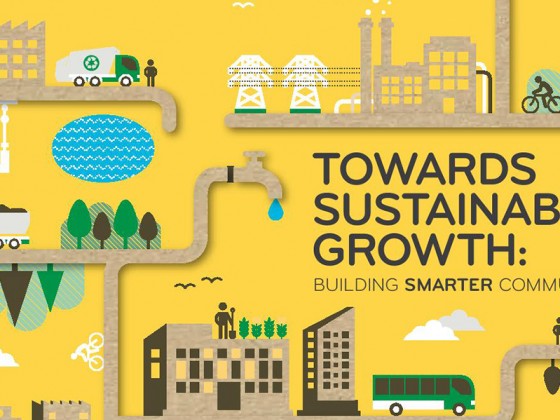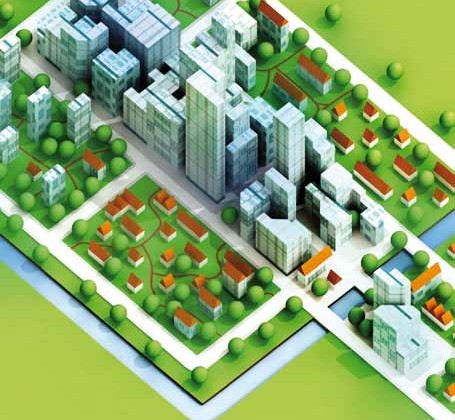by | Nur Suraya Mustafar and Wan Jamaluddin Wan Mohamad
The growing global environment and social concern, high rate of depletion of petroleum resources, and new environmental regulations have forced the search for new composites and green materials compatible with sustainable resources. Over the past years, sustainable eco-efficient practices and product have gained attention and the use of natural fibres as reinforcement for polymers has been increasing rapidly. The natural fibre composites, so called bio-composites, are subject of many scientific and research projects, and many commercial programs.
Bio composites can be defined as a material formed by a resin and reinforcement of natural fibers (usually derived from plants or cellulose). There is a variety of natural fiber available in Malaysia such as kenaf, abaca, oil palm empty fruit bunch, corn stalk, sugarcane bagasse, pineapple leaves, banana, kapok and coir. These fibers are biodegradable and renewable resources which can be used to ensure sustainable resources and environmental friendly. Such fibers can generally be classified into three types, says Prof. Lawrence Drzal, director of the Composite Materials and Structure Center at Michigan State University (East Lansing, Michigan). “Bast” fibers, such as jute, abaca and kenaf are noted for being fairly stiff when used as a composite reinforcement. Leaf fibers, including sisal, pineapple leaves and banana are noted for improving composite toughness with somewhat lower structural contribution. Finally, seed or fruit fibers – kapok, and coir – demonstrate elastomeric type toughness, but are not structural.1 Locally, among natural fibre with high potential use is kenaf, scientifically known as hibiscus cannabinus sp. is a jute-like plant from the hibiscus family that can be used as a raw material to make multitude of products like high quality paper, biocomposites for automotive door trimmings and interior shelving, bioplastics industry, and building materials like medium density fiberboards.
The beginning of composite materials may have been the bricks fashioned by the ancient Egyptians from mud and straw. The ancient brick-making process can still be seen on Egyptian tomb paintings in the Metropolitan Museum of Art. Commercialization of the composites could be traced to early century when the cellulose fibers were used to reinforce phenolic, urea and melamine resins. Composites in the world of today have wide range of applications, wherever high strength-to-weight ratio remains an important consideration for use. Increasingly, the application has expanded to industrial scale production to produce car components, insulator, containers, and interior decoration. Its principal use is found in transportation and construction.
In majority of cases, the requirement of high performance in the transportation and construction industries reduces the usage of natural fibers or being used as fillers only. However, today Natural or Bio-fiber composites are emerging as viable alternative to glass fiber reinforced composites, especially in automotive application. Natural fibers, which traditionally were used as fillers for thermosets, are now becoming one of the fastest growing performance additives for thermoplastics. Advantages of natural fibers over man-made glass fiber are: Low cost, low density, high stiffness, competitive specific mechanical properties, reduced energy consumption, carbon dioxide sequestration and biodegradability. Natural fibers offer a possibility for developing countries to use their own natural resources in their composite processing industries.2
In automotive industry, these raw natural fibers could be processed and turned into short fiber or long fiber, depending on application and purpose. Composite formation begins when these fibers, which are blended with other material and resins, go through manufacturing process of injection molding, extrusion, pultrusion and thermoforming into sheet, mat or profiles forms. The commercialized natural fibers composite such as door panels, seat backs, headliners, package trays, dashboard trunk liners and other interior parts has become low cost and low weight alternatives due to the increasing of oil price.3 Our local manufacturers, like PolyComposite Sdn Bhd, are producing thermoformed interior trims; package tray, door panel and speaker shelf for local automotive players; Perodua, Proton, Honda, Hyundai and Naza (Kia).
The application of Natural fiber composite in construction are decking, flooring, ceiling, wall, grating, cladding and other interior application. Composite materials are widely used in the construction field for the last 20 years. In Malaysia, composite materials are utilized extensively only after the introduction of the Industrialized Building System (IBS). The Composite Building System is a part of IBS that is applied recently due to its easier installation, light weight and ease in handling and is extensively used because the conventional building system is unable to cope with the huge demand in the construction industry.
Duralite Sdn Bhd, Everise Crimson Sdn Bhd, KPC Manufacturing, IRM Composite and Kencana Fiber Composite Sdn Bhd are local companies involved with composite construction. They produced panel and profile from wood wool fiber and kenaf fiber which are applicable in today’s levels. It is ideal for external and internal walls, roof decking and concrete shuttering with cost effective, high thermal insulation value, fire resistant and acoustic properties.
As a strategy to enhance efficiency and productivity, the Government is committed to embark in IBS more rigorously and this has been approved by the Cabinet. The implementation of IBS in Malaysia is to address issues associated with foreign labors, increasing price of raw materials, and the reduction of energy for future sustainability.
In Malaysia, The Fibre and Biocomposite Development Centre (FIDEC) was established in September 2006 to spearhead the development of the fibre and biocomposite industry. It acts as a focal point for information on pre-commercialisation activities and coordination of Research& Development (R&D), exclusively for the biocomposite industry in Malaysia.4
The Ministry of Plantation Industries and Commodities aims to develop kenaf into a new sustainable source of growth to diversify Malaysia’s commodity sector. As initiatives to develop natural fiber composite, the government had allocated RM2 million for kenaf research under the Seventh Malaysia Plan (1996-2000), RM 3.8 million under the Eighth Malaysia Plan (2001-2005), and RM 10 million under the Ninth Malaysia Plan (2006-2010) to East Coast Economic Region (ECER) development plan to attract industrial player to invest in kenaf.
In line with the East Coast Economic Region (ECER)’s plans to promote kenaf, the country’s first kenaf Collection, Processing and Marketing Centre (CPMC) was established on a 0.5 hectare in Beris Lalang in collaboration with the National Kenaf Tobacco Board (NKTB). The centre is be operated and managed by Symphony Advance Sdn Bhd (SASB) together with several other companies 5.
Under ECER the target area for kenaf is about 10,000 ha. In his speech, the Plantation Industries and Commodities Minister Tan Sri Bernard Dompok announced that Kenaf cultivation would be extended to outside the tobacco growing areas. For a start, a total of 2,210ha of land has been allocated for kenaf cultivation including 1,000ha in Pahang. Another 1,210ha spread out in other states such as Kelantan (500ha), Terengganu (600ha), Kedah (50ha), Perlis (50ha), Perak (5ha) and Sabah (5ha).
Symphony Advance Sdn Bhd is exploring opportunities with Samsung Group and other multinational companies to build kenaf polymer factory in Kertih, Terengganu. Other local companies that have taken part are Integral Wood Sdn Bhd, KEFI Malaysia Sdn Bhd, Kenaf Natural Fibre Industries Sdn Bhd and Malaysian Newsprint industries. In the meanwhile, Malaysia has sent a first consignment of 1000 tonnes of kenaf powder to Korea and the objective was to increase the amount to 2000 tonnes a month. The former Prime Minister, Tun Abdullah Ahmad Badawi, mentioned in his speech that Malaysia is looking into a good future prospect with Korea for the next ten years to see a growing economic opportunities and more bilateral connection between the two countries 7. These Malaysian and multinational companies have agreed to invest in kenaf downstream activities and take participate in research and development, fiber separation processing, production of kenaf powder until commercialization.
The National Commodities Policy has stipulated the need to enhance the development of kenaf downstream industry and promote the utilization of kenaf in relevant product development and manufacturing. Manufacturing of kenaf composite automotive parts could be the desired downstream activities. Fibre produced from the stem of kenaf has great potential in various automotive parts and components composite applications. The advent of energy-efficient vehicles (EEVs) drives more automakers to look for ways of reducing their vehicle weight and kenaf composites offer a viable solution. Currently, kenaf reinforced composites are used in automotive trim components such as door panels, seatbacks, headliners and package trays certain parts has used in Proton and Perodua.
The significant advantage offered by kenaf fibre is its low cost compared to synthetic glass and carbon fibres. It is biodegradable. Hence, parts made from kenaf-reinforced composite are easily disposed.
The National Automotive Policy drive for local EEV manufacturing will open up larger market opportunities for the kenaf industry. Kenaf composite applications in EEV components are expected to increase, especially with the advent of plug-in hybrids and full electric vehicles in the near future. To date, Malaysia has launched a local EEV, Proton Iriz.
In this respect, the Malaysia Automotive Institute can be the focal point for automotive industry players and kenafrelated stakeholders to come together to formulate action plans to enhance kenaf utilization in the local automotive scene.
The growing concern on the environment in the developed markets, the green image of the industry will be promoted through the utilization of non-wood fibres and biocomposites, and encourage manufacturers to attain international environment standards, for example ISO 14000 8.
The economic crisis, depletion of petroleum and environment concerns helped biocomposites to gain importance. Many studies regarding bio-composites are in development. Subjects like: fiber architecture, (fiber geometry, orientation, and volume friction); fiber impregnation; fiber-matrix compatibility; maximum quantity of the fiber in the resin system, the optimum quantity of fiber to achieve desired product (mechanical properties), etc. are being explored. In line with the technology advancement in processing and innovation, the natural fiber-based products could the future of the manufacturing industry.
References
1. Drzal, Prof. Amar Mohanty and Dr Manju Misra co- authored a major reference book, Natural Fibers, Biopolymers and Their Biocomposites, 2005, CRC Press
2. Jec Composites Magazine Industrial Applications Natural Fibre Reinforced Composites
3. Article Natural Fibers for Automotive
4. Malaysia Timber Industry Board
5. ECER’s First Kenaf Collection Center To Open This Month, May 2, 2008 – Bernama
6. The Star Online Apr 29,2010 Growing demand for kenaf
7. Korean Press 25 October 2008
8. Industrial Master Plan 3










